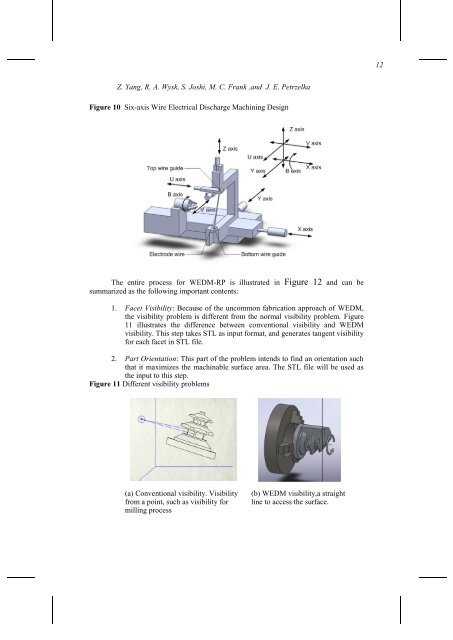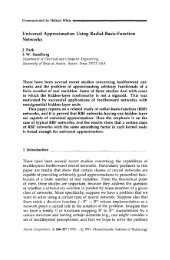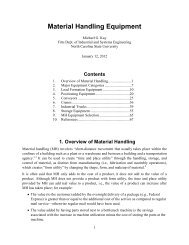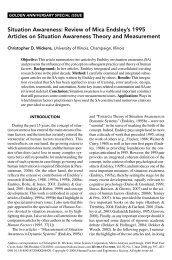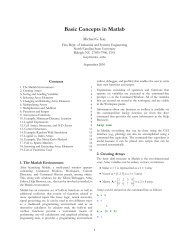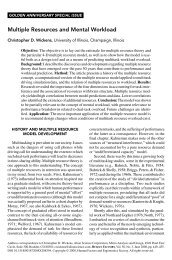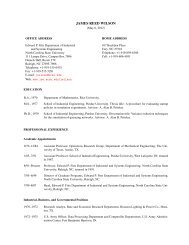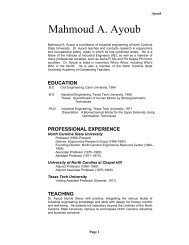Conventional Machining Methods for Rapid Prototyping
Conventional Machining Methods for Rapid Prototyping
Conventional Machining Methods for Rapid Prototyping
Create successful ePaper yourself
Turn your PDF publications into a flip-book with our unique Google optimized e-Paper software.
12<br />
Z. Yang, R. A. Wysk, S. Joshi, M. C. Frank ,and J. E. Petrzelka<br />
Figure 10 Six-axis Wire Electrical Discharge <strong>Machining</strong> Design<br />
The entire process <strong>for</strong> WEDM-RP is illustrated in Figure 12 and can be<br />
summarized as the following important contents:<br />
1. Facet Visibility: Because of the uncommon fabrication approach of WEDM,<br />
the visibility problem is different from the normal visibility problem. Figure<br />
11 illustrates the difference between conventional visibility and WEDM<br />
visibility. This step takes STL as input <strong>for</strong>mat, and generates tangent visibility<br />
<strong>for</strong> each facet in STL file.<br />
2. Part Orientation: This part of the problem intends to find an orientation such<br />
that it maximizes the machinable surface area. The STL file will be used as<br />
the input to this step.<br />
Figure 11 Different visibility problems<br />
(a) <strong>Conventional</strong> visibility. Visibility<br />
from a point, such as visibility <strong>for</strong><br />
milling process<br />
(b) WEDM visibility,a straight<br />
line to access the surface.


